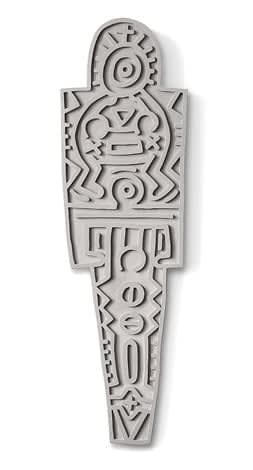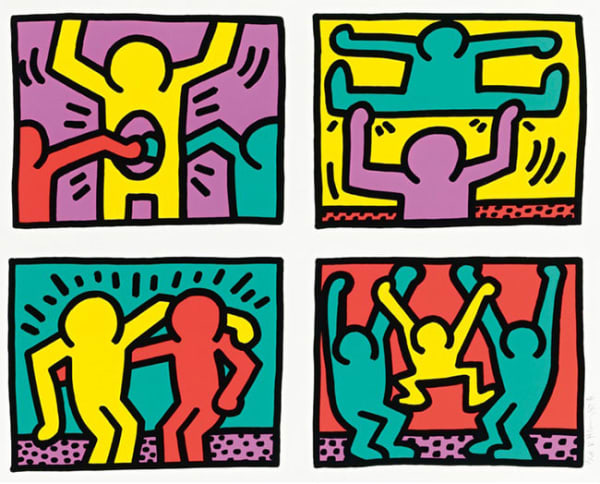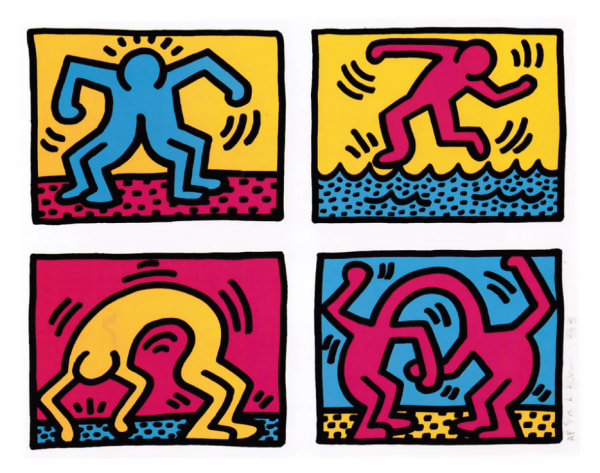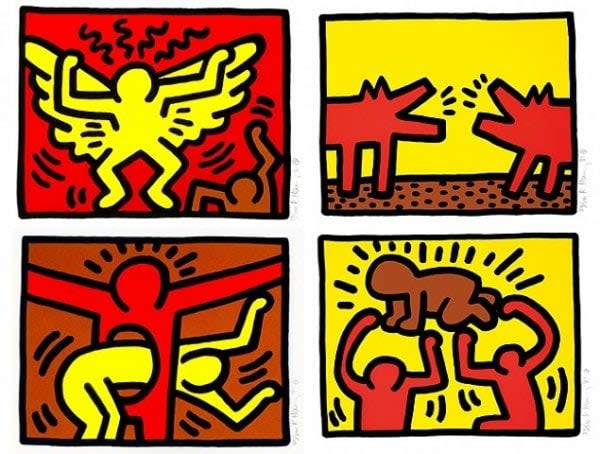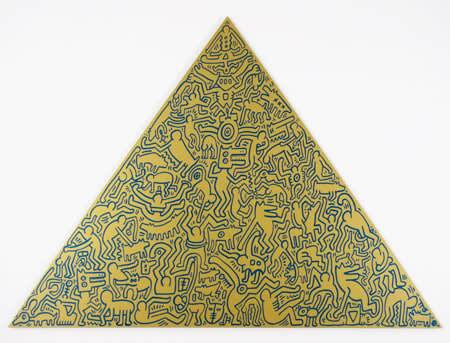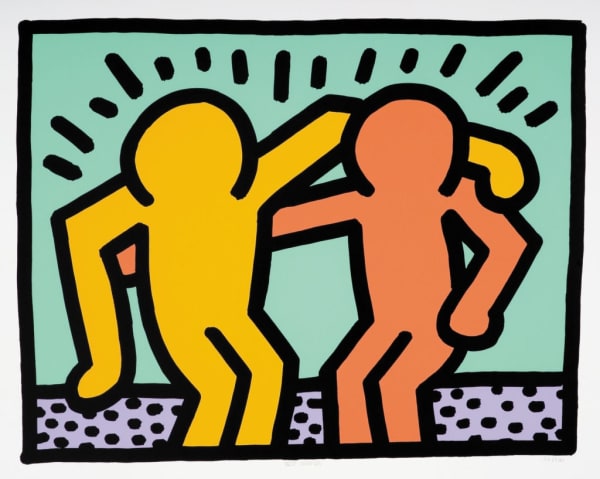Keith Haring’s art pulses with rhythm, energy, and movement—qualities deeply rooted in the music and dance scenes that shaped his life and creative vision. Emerging in New York during the early 1980s, Haring was immersed in a vibrant cultural landscape dominated by hip-hop, breakdancing, punk, and club culture. These dynamic influences are unmistakable in his instantly recognizable visual language.
The experience of music as a physical and communal force resonated deeply with Haring, who often translated these sensations into his artwork. His figures—radiant babies, barking dogs, and dancing bodies—move with an infectious vitality, as if choreographed to the beat of a track.
Breakdancing and graffiti, twin pillars of early hip-hop culture, also left a profound mark. Haring admired the improvisation and athleticism of breakdancers and mirrored that energy in his own process, often painting with spontaneous, gestural strokes that mimicked the cadence of a dancer in motion. His subway drawings, executed in chalk on empty ad panels, were acts of performance art in themselves—created quickly, boldly, and in public view.
For Haring, music wasn’t merely background noise; it was a catalyst for visual storytelling and a tool for social commentary. His collaborations with musicians like Grace Jones and Run-D.M.C. further illustrate how intertwined his art was with the rhythms of his time.
Haring’s work is a visual dance—a celebration of sound, motion, and the transformative power of creative expression. Music didn’t just influence his art; it helped define its soul.
-
-
 Keith Haring, Totem (Concrete), 1988-1989
Keith Haring, Totem (Concrete), 1988-1989 -
 Keith Haring, Totem (Wood), 1988
Keith Haring, Totem (Wood), 1988 -
 Keith Haring, Pop Shop Quad I (Littmann PP. 81), 1987
Keith Haring, Pop Shop Quad I (Littmann PP. 81), 1987 -
 Keith Haring, Pop Shop Quad II (Littmann PP. 94-95), 1988
Keith Haring, Pop Shop Quad II (Littmann PP. 94-95), 1988 -
 Keith Haring, Pop Shop Quad IV (Littmann PP. 142), 1989
Keith Haring, Pop Shop Quad IV (Littmann PP. 142), 1989 -
 Keith Haring, Untitled (Man on Dolphin) (Littmann PP. 84), 1987
Keith Haring, Untitled (Man on Dolphin) (Littmann PP. 84), 1987 -
 Keith Haring, Untitled, 1989
Keith Haring, Untitled, 1989 -
 Keith Haring, Pyramid Gold, 1989
Keith Haring, Pyramid Gold, 1989 -
 Keith Haring, Best Buddies, 1990
Keith Haring, Best Buddies, 1990 -
 Keith Haring, Growing 2 (Littmann PP. 90), 1988
Keith Haring, Growing 2 (Littmann PP. 90), 1988
-
-

